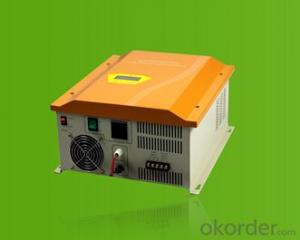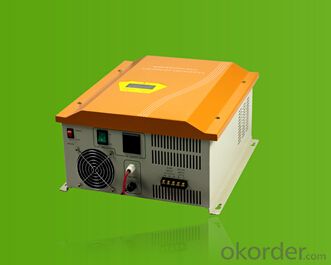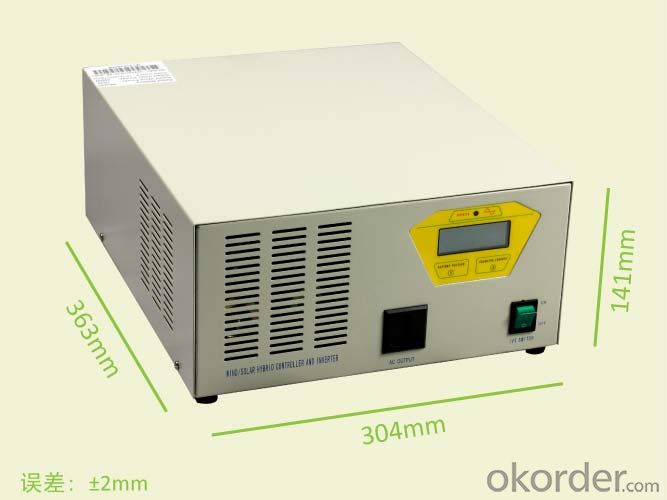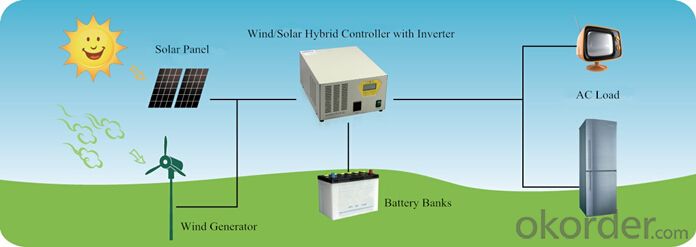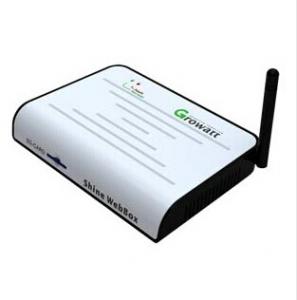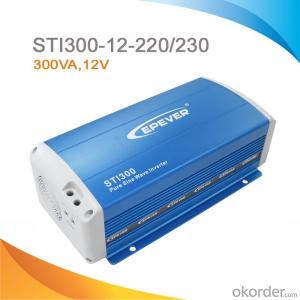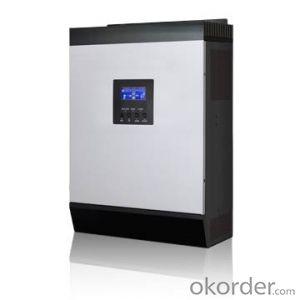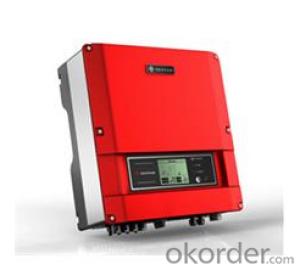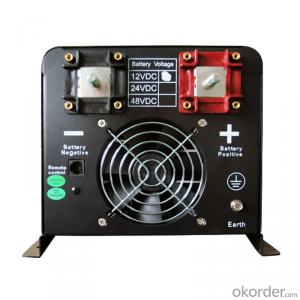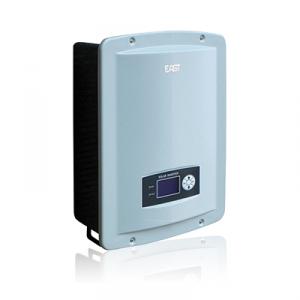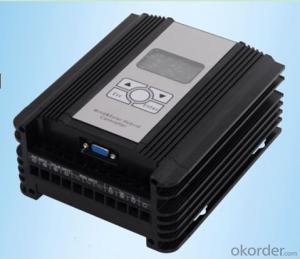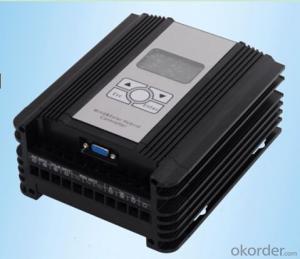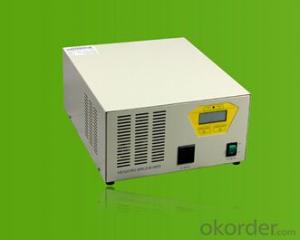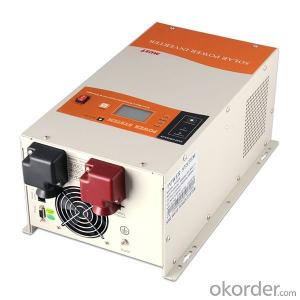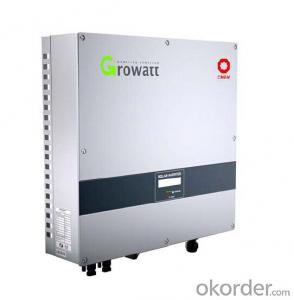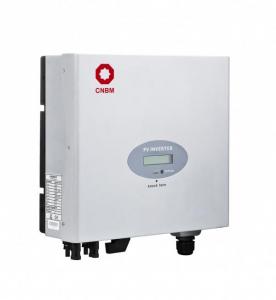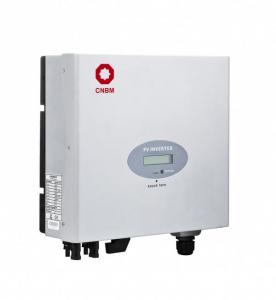Sunways Solar Inverter 1kw Wind Solar Hybrid Controller with Inverter
- Loading Port:
- Shanghai
- Payment Terms:
- TT or LC
- Min Order Qty:
- 1 unit
- Supply Capability:
- 5000 unit/month
OKorder Service Pledge
OKorder Financial Service
You Might Also Like
I. PRODUCT INTRODUCTION
Wind/solar hybrid controller with inverter is the intelligent power supply with integration of wind/solar control and DC to AC inverse.
The apparatus is mainly used for wind /solar renewable energy power system; provide effective power supply for traffic inconvenience, harsh environment of mountain area, a pasturing area, border, islands and other areas without electricity.
With decent appearance, easy operation, and visual indication of LCD, the controller has perfect protection function, high charging efficiency and low no-load loss.
II. PERFORMANCE FEATURES
Perfect protection function, thus the system has higher reliability.
LCD display function, visually display battery voltage and charge current.
Integrated design of controller and inverter, with simple and easy maintenance.
PWM stepless unload mode, which burn excess power into dump load, making the battery charging in the best status.
Power frequency toroidal transformer, ensures inverter has high efficiency and low no-load loss.
Pure sine wave output, compared with square wave or modified wave, has higher efficiency and higher capability of driving load.
Certificate for Invention Patent of wind/solar hybrid controller with inverter, European CE.
III. APPLICATION AREAS
Domestic household wind power and photovoltaic power system, wind power station and photovoltaic power station.
Coastal islands, remote mountainous, border posts for regions shortage of or without electricity.
Government demonstration projects, landscape lighting project.
Mobile communication base station, expressway and other non-residential regions.
IV. 600W-1KW TECHNICAL PARAMETERS
Product Mode | WWSI0606-24 | WWSI0610-24 | WWSI1010-48 |
Rated wind turbine power | 600 W | 600 W | 1000 W |
Rated solar panel power | 180 W | 180 W | 300 W |
Floating charging voltage | 29 V | 29 V | 58 V |
Dump load current | 25 A | 25 A | 21 A |
Rated inverter output capacity | 600 VA | 600 VA | 1000 VA |
Rated battery banks voltage | 24 V | 24 V | 48 V |
Over voltage shutoff | 34 V | 34 V | 68 V |
Over voltage recovery | 33 V | 33 V | 66 V |
Battery over-discharge shutoff | 21.6 V | 21.6 V | 43.2 V |
Battery over-discharge recovery | 24 V | 24 V | 48 V |
No-load loss current | ≤0.7 A | ≤0.7 A | ≤0.5 A |
Net weight | 13 kg | 16 kg | 16 kg |
dimension | 400×340×160 mm | ||
Output wave | pure sine wave | ||
Display mode | LCD | ||
Cooling | Fan | ||
Rated output power | 110/120/220/230/240 VAC | ||
Wave distortion | ≤4% | ||
Output frequency | 50/60±0.5 Hz | ||
Dynamic response | 5% | ||
Power factor | ≥0.8 | ||
Over-load capacity | 120% 1min, 150% 10s | ||
Inverter efficiency | 90% Maximum | ||
Isolating mode | frequency toroidal transformer | ||
Protection level | IP20(Indoor) | ||
Noise (1 meter) | ≤40dB | ||
Insulating strength | 1500VAC, 1min | ||
Protection functions | Battery over-charge protection; battery over-discharge protection; battery reverse connection protection; output overload protection; output short circuit protection; overheating protection; solar reverse charge protection; solar reverse connection protection; automatic brake and manual brake protection; lighting protection | ||
Working temperature | -20~+55℃ | ||
Ambient humidity | 0~93%, without condensing | ||
Working altitude | ≤4000m | ||
In order to serve our customers better. Our company can adjust parameters configuration according to customer’s requirement. | |||
V. APPENDIX
Optional Functions | |
Ø By-pass function: It will switch to the city grid automatically when the battery is under voltage, which ensures the continuity and stability of system. | Ø English display |
Friendly reminder: users should offer following information when ordering wind/solar hybrid controller with inverter | |
Ø Rated battery voltage | Ø Rated wind turbine power |
Ø Rated solar panel power | Ø Load peak power and load characteristics |
Ø With or without by-pass function | Ø Inverter output capacity, rated output voltage and rated output frequency |
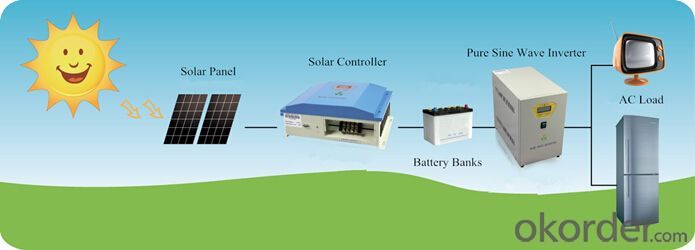
- Q: What are the safety measures to consider when installing a solar inverter?
- When installing a solar inverter, there are several important safety measures to consider. Firstly, it is crucial to turn off the main electrical supply before beginning any installation work. This will prevent the risk of electric shock or injury. Additionally, it is important to wear appropriate personal protective equipment (PPE) such as gloves, safety glasses, and non-slip footwear to ensure personal safety during the installation process. Another safety measure is to ensure proper grounding of the solar inverter system to prevent electrical faults and potential fire hazards. Furthermore, it is essential to follow the manufacturer's instructions and guidelines for installation to ensure proper wiring and avoid any potential electrical hazards. Regular maintenance and inspections should also be conducted to identify and address any potential safety issues or malfunctions. Overall, prioritizing safety measures during the installation of a solar inverter is crucial to minimize risks and ensure the safe and efficient operation of the system.
- Q: Is the grid side of the grid and the inverter?
- Off-grid system power transmission sequence: photovoltaic panels> relays> inverters> relays> electricity load;
- Q: Photovoltaic grid-connected inverter without DC emc how will happen
- by means of energy converters can be converted into electrical energy. The process of converting light energy directly into electrical energy is precisely the response to photovoltaic effects. Without the need for any other mechanical parts, the energy in
- Q: How does a solar inverter handle grid frequency deviations?
- A solar inverter handles grid frequency deviations by continuously monitoring the frequency of the grid and adjusting its output accordingly. If the grid frequency deviates from the set nominal frequency, the inverter uses its internal control algorithm to regulate the power output from the solar panels to match the grid frequency. This ensures that the inverter stays synchronized with the grid and helps maintain stability in the overall power system.
- Q: Can a solar inverter be used in harsh weather conditions?
- Yes, solar inverters are designed to withstand harsh weather conditions such as extreme temperatures, humidity, and even rain. They are typically built with protective enclosures and advanced technology to ensure reliable operation and optimal performance in challenging environmental conditions.
- Q: What is the maximum power capacity that a solar inverter can handle?
- The maximum power capacity that a solar inverter can handle varies depending on the specific model and brand. However, modern solar inverters can typically handle power capacities ranging from a few hundred watts to several megawatts.
- Q: How does the input power rating affect the performance of a solar inverter?
- The input power rating of a solar inverter directly affects its performance. A higher input power rating allows the inverter to handle a greater amount of solar energy, resulting in a higher energy conversion efficiency and overall performance. On the other hand, a lower input power rating may limit the inverter's capacity to handle larger solar systems, potentially leading to lower efficiency and reduced performance. Therefore, selecting an inverter with an appropriate input power rating is crucial to ensure optimal performance in a solar energy system.
- Q: What is the maximum power capacity of a solar inverter?
- The maximum power capacity of a solar inverter can vary depending on its specific model and design. However, typical residential solar inverters have a power capacity range of 1-10 kilowatts (kW), while commercial and industrial inverters can range from 10 kW to several megawatts (MW).
- Q: Can a solar inverter be used with different types of solar panel mounting systems?
- Yes, a solar inverter can be used with different types of solar panel mounting systems. The solar inverter is designed to convert the direct current (DC) generated by the solar panels into alternating current (AC) that can be used to power appliances and electrical devices. Regardless of the mounting system, as long as the solar panels are connected to the solar inverter, it can efficiently convert the generated energy for use.
- Q: How do you choose the right size of solar inverter for a system?
- When choosing the right size of solar inverter for a system, it is important to consider the total capacity of the solar panels and the expected power output. The inverter should have a capacity that matches or slightly exceeds the maximum power output of the panels to ensure optimal efficiency. Additional factors such as the type of grid connection and any future expansion plans should also be taken into account. Consulting with a professional solar installer or conducting a thorough system assessment can help determine the appropriate size of the inverter for a given solar system.
Send your message to us
Sunways Solar Inverter 1kw Wind Solar Hybrid Controller with Inverter
- Loading Port:
- Shanghai
- Payment Terms:
- TT or LC
- Min Order Qty:
- 1 unit
- Supply Capability:
- 5000 unit/month
OKorder Service Pledge
OKorder Financial Service
Similar products
Hot products
Hot Searches
Related keywords
